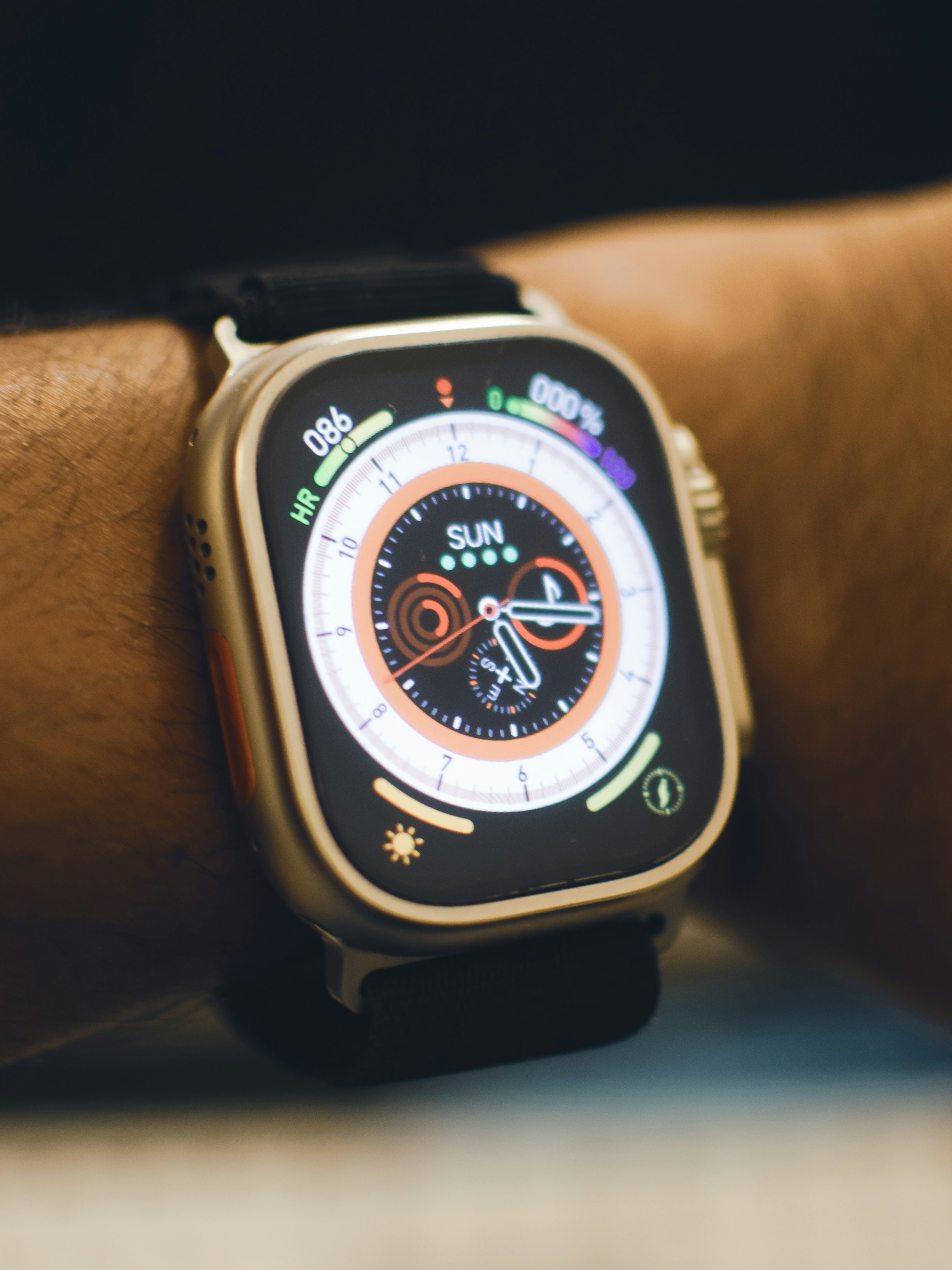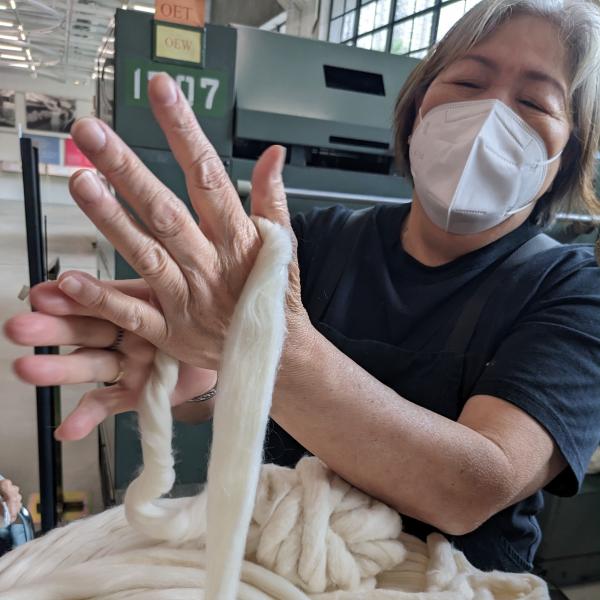Interview with Faculty Fellow Jianqing Chen
Long gone are the days when smartphones were a novelty, when a finger tap on a touch-sensitive screen could thrill a user with immediate access to photos, videos and games. Such devices, now expanded to include everything from refrigerators to car consoles, are essential parts of our everyday lives. It’s easy to miss the cultural context that has transformed and been transformed by the technology, mediating our experience not only with our electronics but with our offline lives. Indeed, the subject has yet to receive deep scholarly analysis, says Jianqing Chen, assistant professor in the Department of East Asian Languages and Cultures and the Film and Media Studies program. She aims to take stock of this blind spot in her groundbreaking new book project, “Touch Screen: Everyday Media in Contemporary China.” Read on for a preview of her book-in-progress.
Briefly, what is your book about?
My book invites readers to embark on a journey into the alternative dynamic world of contemporary China. In this world, touchscreen devices and digital platforms have been elevated to a ubiquitously central place in the media ecology, with everything — from instant messaging photo-sharing social networking to live streaming and online shopping — facilitated by touchscreen interfaces. This ubiquity and centrality of the touchscreen has radically transformed how a billion Chinese, accounting for one-fifth of global smartphone users, interact with their everyday lives optically, tactilely and affectively.
Now, Chinese smartphones, such as Xiaomi, Oppo, and Vivo, and mobile apps, notably TikTok, extend their influence beyond the national borders; Chinese touchscreen media vie with Western counterparts in reshaping the global digital landscape. My book is a pioneering and timely investigation of the digital media culture in contemporary China. It illuminates the roots of Chinese touchscreen innovations that are now making waves globally. Think about TikTok — my examination of touchscreen media looks at where that came from and what it means, not just for China but potentially for our global digital future.

What might people outside of China be surprised to learn about the use of touchscreen media there?
Everyday interactions are very important for my theorization of touchscreen media. When most of us think about the touchscreen, we picture a smart mobile device: a sleek, rectangular display that responds to our finger taps. But that simple hardware view doesn’t do justice to the complexity of touchscreen media. What I’ve found in my research is that our experience with touchscreens is deeply rooted in our social and cultural context. It’s not just about the device itself but about the apps we use, the platforms we engage with and even the specific gestures we make when interacting with these devices.
In my book, starting from the moment one touches the screen, I dive into five popular media practices that have seamlessly woven themselves into the daily fabric of contemporary China: swiping left and right to rewind and fast-forward a streaming video, typing instant comments while watching streaming videos, zooming in and out to retouch selfies, scrolling down infinitely to read serial novels on mobile displays, and holding the screen vertically when interacting with e-commerce livestreams. Each of these actions involves a unique finger gesture and is tied to a platform that’s particularly popular in China.
I want to use the Chinese user’s everyday interaction with touchscreen, these specific localized experiences, as a springboard for conceptualizing touchscreen media as a global media. The book strives to illuminate the intricate interplay between global influence and local innovations in shaping China’s vibrant touchscreen practices.
Long before TikTok went worldwide, Chinese touchscreen media was already a part of global dynamics. In this light, we can’t simply say Chinese media is exactly like Western media, nor is it completely different. Viewing it as totally “Other” risks exoticizing it. The narratives some U.S. policymakers push — portraying Chinese digital media as data-poachers, security threats or as the antithesis to American values of innovation and the open internet — oversimplify things and only breed misunderstanding, hostility and rivalry.
Instead, my book tends to show how Chinese touchscreen media has emerged and grown by adopting ideas from Western tech giants but then reinterpreting and redesigning them, sometimes intentionally, sometimes not. This process has led to unique practices that often diverge from Silicon Valley’s original visions. It’s this intricate dance between the global and the local that makes Chinese touchscreen media so fascinating to study.

Your book examines even the gestures that accompany touchscreen media use – swiping, pinching, scrolling. What do these movements tell us about digital life?
It’s fascinating how much those little finger movements on our touchscreens can tell us about our digital life. Think about it: Tapping, swiping, scrolling, pinching to zoom — we do these things without even thinking now. But here’s the thing: These aren’t just natural hand movements we’ve always done. They’re actually choreographed by the devices themselves. And now they’ve taken on whole new meanings if you think about new slang terms, such as “doomscrolling” or “swipe right.”
It gets even more interesting when you look at how these gestures can mean different things in different contexts. Let me give you a couple of examples.
So, in one of my book chapters, I did a comparison between American streaming services like YouTube and Netflix and their Chinese counterparts like iQiyi and Tencent Video. What I found was pretty cool. In China, they’ve developed this unique way of rewinding and fast-forwarding videos: You swipe left and right across the screen. It’s totally different from what we’re used to in the West, where we usually double-tap for a quick 10-second jump. This swiping gesture creates a whole new perception of “streaming,” as if the video is flowing across your screen from left to right.
And then there’s the “pinch to zoom” gesture. I think this one’s really special, as I believe it is the touchscreen gesture par excellence. “Pinch to zoom” refers to the hand movement when you bring your fingers together to zoom out and spread them apart to zoom in. I believe this gesture has become a powerful metaphor for how we interact with the world at different scales. It’s so important that I’ve used it as the methodological framework for my whole book. Each chapter is a dynamic, multiscalar and multilayer exploration, a kind of zooming in and out on different aspects of touchscreen culture in China that transcends what happens on the glass surface of the touchscreen.
One of your chapters will focus on the new selfie style “little fresh” (xiao qingxian). What can we learn about the context of this aesthetic?
In one of my book chapters, I examine the “little fresh” (xiao qingxin) style, a trendy female selfie aesthetic in China. These selfies characteristically feature a woman’s face set within a natural environment of flowers and plants. The visual style is marked by desaturated colors, shallow depth of field, backlighting from the sun and slight overexposure, creating an atmosphere of serenity and ethereality.
What’s particularly intriguing about these selfies is how the seemingly flawless appearance of the subject is achieved — and arguably, only achievable — through simplified or automated facial retouching via beauty filters. This practice offers a unique opportunity to analyze beauty filters and their algorithmic operations, a pervasive yet understudied digital technology that produces a self often dismissed as merely deceptive or artificial.
However, I propose a different perspective. Rather than viewing the digitally filtered self as a deviation from an authentic self, I argue that beauty filter retouching is a “modification of modifications.” It adjusts the gender, race and class implications introduced by earlier visual strategies and fashion trends.
In the context of little fresh selfies, Chinese women produce a form of digital whiteface. This should be studied alongside, but distinct from, various techno-aesthetic stylizations that have previously shaped Chinese women’s self-images. This digital whiteface performs a gendered and racialized ideal that remodifies socialist portrayals of women — which often featured technicolor-enhanced rosy cheeks and assigned gender roles — as well as the racialized figuration of Asiatic femininity imposed on Chinese women in Euro-American visual cultures.
Ultimately, this practice produces a new conception of femininity for Chinese women in the contemporary era. It’s a complex interplay of digital technology, visual cultural history and embodied identity formation that reveals much about the evolving nature of self-representation and self-production in the digital age.
Tell us about your research process for this book. What sources are you drawing on?
My book interweaves a close analysis of onscreen practices with ethnographic details of Chinese digital life and a critical examination of touchscreen technology to get a full picture of touchscreen media in China.
I’m really diving deep into what’s happening on these screens. I’m looking at popular trends and practices that millions of people, including myself, are engaging with every day. But instead of stopping here, I’m using these cases as a window to understand bigger sociopolitical changes happening at personal, national and even international levels. I believe that this little device in our palms is actually fueling some major transformations in post-socialist China. To capture this, I’m conducting digital ethnography across diverse touchscreen demographics. This includes users from urban centers to rural areas and across different age, gender and class groups.
I’m also using these case studies to get a handle on key touchscreen technologies. I bring together two different family trees of media to study contemporary touchscreen: first, the lineage of screen-based visual media including media forms such as cinema, television, photography and video. I see touchscreen media as both inheriting from these media forms and transforming them through the touchscreen’s computational processing. Second, the history of computing: Here, the touchscreen represents a complex amalgamation of multiple interrelated technologies, each with its own historical trajectories: capacitive multitouch hardware, haptic-responsive graphical user interface, microprocessor and mobile computing networks. Blending insights from visual media traditions and computational technologies, I’m hoping to offer a fresh way of looking at touchscreen media.
So, it’s been a mix of hands-on analysis, a bit of ethnographic work to really get the feel of Chinese digital life and some deep dives into the tech itself. It’s been a wild ride, but I think it gives us a pretty unique perspective on how these small screens are shaping our world in big ways.

What is your goal with this book? What do you want people to leave with a better understanding of?
Primarily, it’s an exploration of China, aiming to capture the zeitgeist of contemporary Chinese society through an analysis of touchscreen practices. By examining how people interact with these ubiquitous devices, I hope to shed new light on the dynamic relationship between media technology and societal changes in the digital realm.
However, the scope of this work extends beyond China’s borders. Despite their pervasiveness, touchscreen media have largely evaded rigorous theoretical examination. This book aims to address that gap by offering a new global, multicultural framework for understanding touchscreen media.
By using China as a case study, I’m proposing a fresh perspective on how we can understand these technologies in various cultural contexts. The goal is to remap our understanding of the “globe” — a concept that’s increasingly crucial in our globalized and multipolar world. This study of touchscreen media in one context — China, in this case — can actually teach us so much about how technology and society interact everywhere.
When readers put down this book, I hope they can look at that smartphone or tablet in their hand a little differently — not just as a cool gadget but as the amazing reflection of our globalized digital landscape, with all its complexity and controversies.
Headline image by Karen Grigorean via Unsplash



